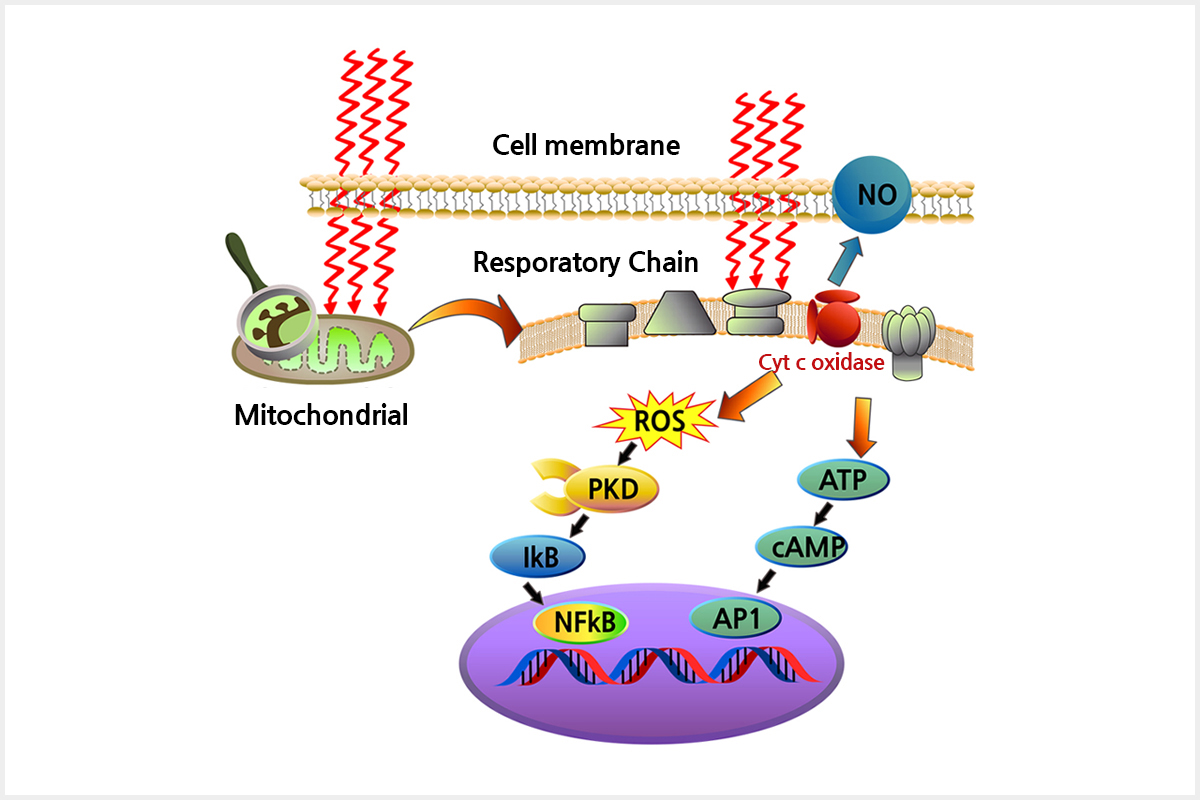Not known Incorrect Statements About Photobiomodulation
Wiki Article
Getting My Photobiomodulation To Work
Table of ContentsThe Photobiomodulation StatementsThe 45-Second Trick For PhotobiomodulationWhat Does Photobiomodulation Mean?The 9-Minute Rule for Photobiomodulation
Laser therapy is a clinical treatment that makes use of focused light to stimulate a procedure called. Throughout PBM, photons go into the tissue and connect with the cytochrome c complicated within mitochondria. This communication activates an organic cascade of events that leads to a boost in mobile metabolism, which can as well as increase the healing procedure.There is consensus that the application of a restorative dose of light to damaged or dysfunctional tissue results in a cellular feedback mediated by mitochondrial mechanisms. Photobiomodulation. Research studies have shown that these changes can affect discomfort and inflammation, along with, tissue fixing
Changes in ATP, reactive oxygen species and nitric oxide comply with light absorption by Cc, O. These results are redox state and dosage reliant.

9 Simple Techniques For Photobiomodulation
PBM tools have been removed for advertising and marketing by FDA via the Premarket Notification/510( k) process as adjunctive devices for the short-lived alleviation of pain. These clearances were based on the presentation of scientific data to support such insurance claims (Photobiomodulation). In this therapy, a light resource is put near or touching the skin, permitting the light energy (photons) to permeate cells where it communicates with chromophores located in cells resulting in photophysical and photochemical adjustments that result in modifications at the molecular, mobile and cells levels of the bodyInterestingly, recent research study suggests that light can improve efficiency in regular tissues and cells. The possible applications of PBMT are countless and are being discovered experimentally at the standard scientific research, pre-clinical and clinical level. The existing scientific usages are for the relief of discomfort and swelling and the therapy of sporting activities injuries.

The treatment parameters and number of sessions required for PBMT depend on area and reason. PBMT usually requires greater than one treatment for optimal discomfort alleviation. It may take a number of treatments for the results to come to be apparent. records that it can take anywhere from 8 to 30 sessions for a therapy to be fully efficient, and some individuals locate it required to undergo treatment two to four times weekly.
Some Ideas on Photobiomodulation You Should Know
Therapy parameters for PBMT were initially developed utilizing cells in vitro and in little animal models. These treatment criteria usually had a low irradiance and fluence and worked well for cutaneous applications. Nevertheless when medical professionals began to utilize PBMT to treat structures that were situated much deeper in the body, they used these specifications with adverse results.
We currently recognize that these unfavorable studies were due to inaccurate gadget and therapy specifications for transcutaneous treatment of deeper frameworks. Recent developments in laser therapy devices and more research into the suitable dosages have dramatically boosted the outcomes of PBMT. For dealing with deep tissues, the wavelength of light made use of identifies the depth of Go Here penetration into a cells.
It is important that a medical professional makes use of the ideal wavelength of light and specifications to treat a problem. One wavelength and one set of therapy parameters will not be effective for all conditions. Negative side results have not been reported from the usage of PBMT.
Photobiomodulation Things To Know Before You Get This
In the initial experiment, Dr. Endre Mester, used shaved rats and observing just how the laser impacted their capacity to expand hair compared to the team that was not receiving LLLT. He discovered that the team of mice obtaining LLLT had the ability to expand their hair back faster than the group of computer mice that really did not receive LLLT (Hoon C, et alia; 2012).This therapy is described by doing this to differentiate the distinction in between the lasers some careers use to cut (eg. in surgical procedures, or oral treatments). Low-level light therapy is painless, non-invasive treatment. It is used to reduce inflammation, swelling, and persistent joint conditions, lower discomfort and accelerate wound healing of nerves and cells (Hoon C, et al; 2012).
LLLT my review here has a biphasic action, suggesting that reduced dosages are usually attended be more helpful than greater doses. That being said, doses higher or lower than the optimum dose does not affect (Hoon C, et al; 2012). For this reason, it can be challenging to have research studies on LLLT with a lot of specifications.
Some business integrated both (LED and laser) to offer a much more well-shaped treatment because lasers can pass through much deeper than LED and infrared light (Norman Doidge, The Mind's Way of Recovery, 2015). Throughout therapy, the location that is being treated is exposed to LED light from a Bio, Flex Laser, which is at 660 nm wavelength, adhered to by infrared light at find more information 830-840 nm wavelength.
Report this wiki page